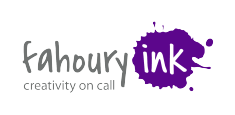A good friend is trying his hand at writing a novel and asked me to read a rough draft.
This is a dude whose personal reading interests lean heavily toward biographies, historical nonfiction (aka battlefield strategy) and classic literature. Case in point: He’s the only person I know who voluntarily read War & Peace. As an adult. For fun.
So he’s not exactly up on the common tropes and storytelling techniques that contribute to a compelling, well-crafted piece of contemporary fiction.
I recently found myself explaining to him the concept of “in media res.” That’s Latin for “in the middle of things,” a writing tactic that starts in the midst of the action rather than chronologically.
Some popular examples:
The Godfather kicks off with Connie’s wedding, not with Vito’s rise to power. That comes later.
Raiders of the Lost Ark doesn’t open with Indy in the classroom, but rather in the middle of the dark jungle with a young, wild-eyed Alfred Molina (who you just somehow know can’t be trusted).
And in 1984, everyone is under totalitarian rule when the story starts, which draws readers in much more effectively than explaining how we got there. You’re already trapped in Winston’s claustrophobic world by the time Orwell reveals how society reached that point.
In media res in marketing content
The in media res technique can be a powerful tool to use in your content because it immediately drops your audience into compelling action or conflict (aka a pain point), bypassing slow-building introductions.
Here are some effective applications:
Email subject lines and openers. Skip the boring stuff like “Our quarterly newsletter.” Instead, try something like “The client hung up mid-pitch—here’s what we learned.” You’re pulling people in with the most interesting part right away.
Social media posts. Don’t make people wait for the point. Hit them with it: “Three minutes before our biggest product demo ever, the server crashed.” Now they’re hooked and want to know what happened.
Videos. Open with the good stuff. Show someone celebrating their win, then reveal how they got there. People care more about the transformation first, then the explanation of how you made it happen.
Case studies and testimonials. Lead with the result: “Nick’s CPA firm increased its revenue by 300% in six months.” Now everyone wants to know how. Then you can walk them back through what actually happened.
Landing page headlines. Get to the transformation fast: “How Edison Electric Cars cut its sales cycle from 6 months to 6 weeks” hits harder than asking “Is your sales process too slow?”
Blog post openings. Start with a moment that stops people in their tracks: “I spent $40,000 on a marketing campaign that got us exactly zero customers.” That kind of raw admission makes people think “OK, I need to hear this story.”
The hook-first approach powers up our natural curiosity
Leveraging the power of in media res requires identifying the most compelling moment in your narrative and starting there, then filling in the context as you go. This works because once you show people something dramatic or surprising, they can’t help but want to know the backstory. It’s just how our brains are wired.
Need more jolts of creative inspiration? Jump on our monthly Creative Compost newsletter subscriber list.

